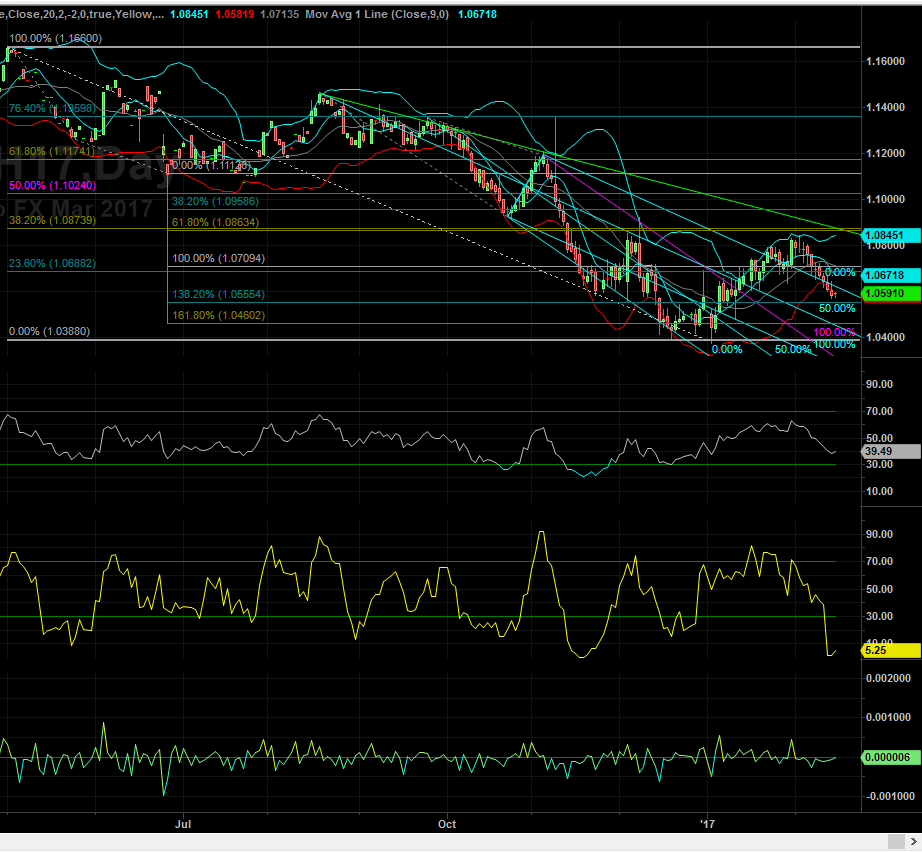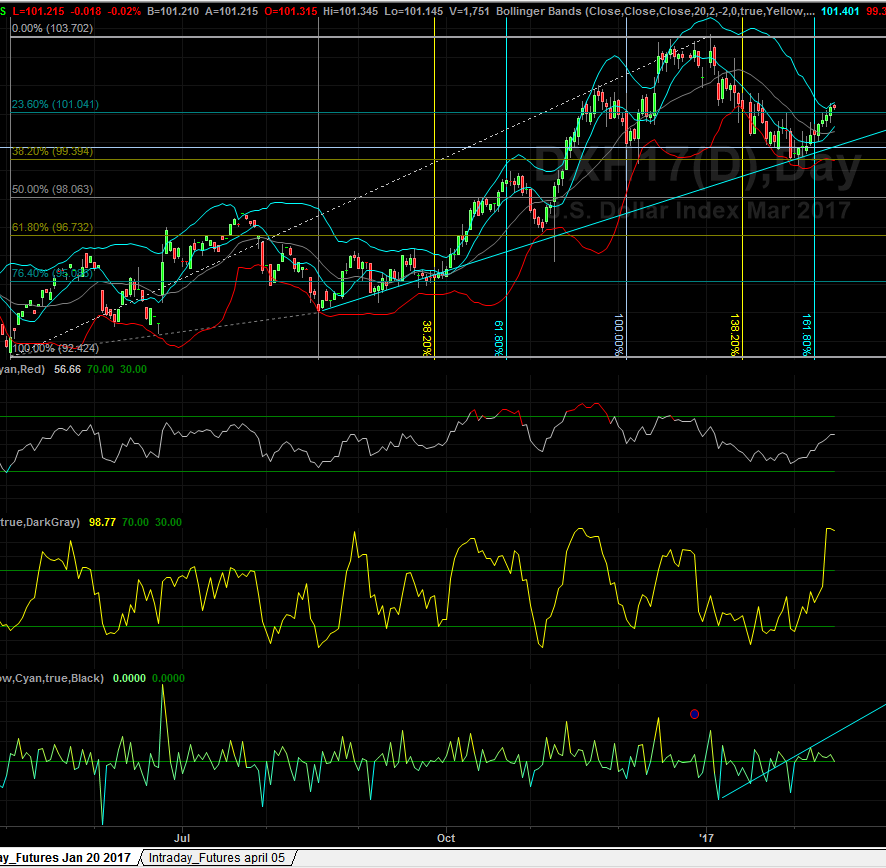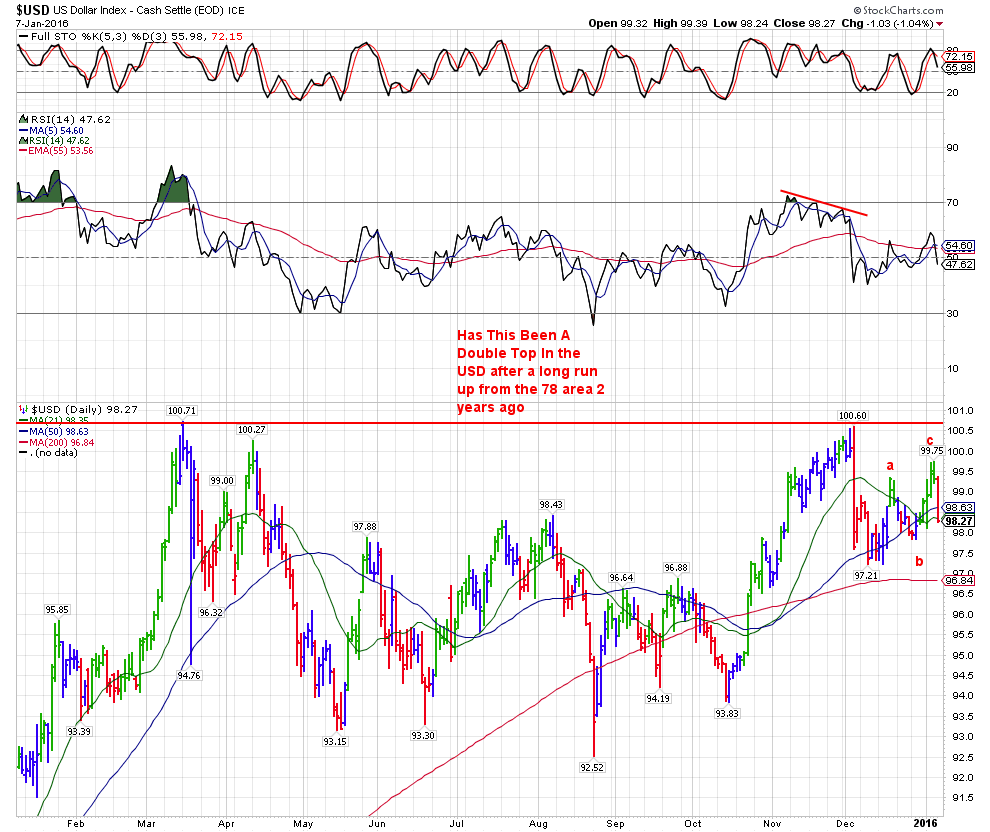Slumdog... Bllomberg's analysis on the reason for US debt sales is incorrect in the reason they are targeting.
The selling is occurring is because the foreign countries are tapped out and need the money. Pimco's tony crescenzi spent a couple of hours on squawk box last friday and Pimco which is owned by German mega Global Reinsurer Allianz..... has offices in 13 countries and Crescenzi was commenting that US debt buying was active with inflows due to the huge positive interest rate differentials.
That Bloomberg article actually mentioned hedged bond and currency flows and that is a zebra of another stripe.
The Global Capital markets begin with the currency markets... 5.3 Trillion dollars on the move everyday... all other markets and prices are derived from what the cost basis in the individual currencies.
the USD is really relatively stable in the bigger picture.... with the USD it is very important to keep this key paragraph in mind
The Bottom line that right now the USD is the only game in town... the world that is.
Message 30977284
Here’s how it plays out: As the world’s dominant reserve currency, the dollar has no peer. International Monetary Fund data show that the greenback accounts for 63.3 percent of global foreign-exchange reserves, with the euro next at 20.3 percent, followed by the British pound and Japanese yen, both at 4.5 percent. That means that in times of crisis, the dollar benefits from global investors seeking a haven, even if the strife and the the uncertainty emanates from the U.S.
It’s possible that a trade war would drive flows into the dollar, putting upward pressure on the currency at the expense of other exchange rates. That would be on top of the natural demand for the greenback created by the anticipation of significant fiscal stimulus floated by the Trump administration and a faster pace of interest-rate increases by the Federal Reserve.
the USD is the only game in town..... the EUR is the second game in town with a 20% weighting by the IMF... I have been talking about it going down for weeks... and it's been weakening against the USD, the CHF - swiss Franc... and even the yen. Greece is actively talking about leaving the EUR and pegging to the USD. The EUR has such structural problems, how many contries are upping their IMF reserves in EUR.... none... The GBP... with Brexit the Pound has lost 20% this past year and faces significant uncertainties... no countries want anymore pounds. Japan has a 350% debt to GDP ratio... worst in the world for a major economy.... the yield is nothing.... country has horrible aging demographics and is trying to climb out of 25 lost years of economic growth.
The Chinese have been burning up A Trillion and a half USD of their foreign currency returns by attempting to support their currency and still capital flight is a major issue and the currency has been weakening against a basket of currencies.
and global currencies reserves that expanded continuously from 2002 until about 3 years ago have been contracting for the past 2 plus years...... these are the supertanker trends that unfold in secular moves.
Message 30451689
here are the global financial leaders saying that global protectionism is coming in Feb 2016..... when Trump was not seen by anyone as being the current president, so do not blame it on him......
International financial system on the verge of an “epoch-defining seismic rupture” ---
Chancellor: Heed the threats to globalization
By Edward Chancellor February 9, 2016
Is the international financial system on the verge of an “epoch-defining seismic rupture” accompanied by a return to global protectionism? This warning was made a couple of years ago by Claudio Borio, the respected head economist at the Bank for International Settlements. Since that time, emerging markets have crashed and some countries have resorted to capital controls to protect their currencies. The last time globalization collapsed was in the 1930s. Looking back at this disastrous period, it is possible to identify some disturbing parallels.
and this is in that same article that I linked to as I had several of my posts over time included because it's an ongoing snowballing story
Once Over $12 Trillion, the World’s Reserves Are Now Shrinking 04/05/ 2015
(This is a big deal .. This is the global downshifting in the creation of what is already half a trillion dollars and will continue to trend downward with another 1 to 2 Trillion Dollars of Reservesleaving the system due to the change in momentum and the wildly wicked world of Negative interest rates which we are seeing in way too many places. such as Switzerland, Sweden Denmark and in other aspects of our Gobal Macro Financial Structure........JJP)
The decade-long surge in foreign-currency reserves held by the world’s central banks is coming to an end.
Global reserves declined to $11.6 trillion in March from a record $12.03 trillion in August 2014, halting a five-fold increase that began in 2004, according to data compiled by Bloomberg. While the drop may be overstated because the strengthening dollar reduced the value of other reserve currencies such as the euro, it still underlines a shift after central banks -- with most of them located in developing nations like China and Russia -- added an average $824 billion to reserves each year over the past decade.
Beyond being emblematic of the dollar’s return to its role as the world’s undisputed dominant currency, the drop in reserves has several potential implications for global markets. It could make it harder for emerging-market countries to boost their money supply and shore up faltering economic growth; it could add to declines in the euro; and it could damp demand for U.S. Treasury bonds.
“It’s a big challenge for emerging markets,” Stephen Jen, a former International Monetary Fund economist who’s co-founder of SLJ Macro Partners LLP in London, said by phone. They “now need more stimulus. The seed has been sowed for future volatility,” he said.
China Sells
Stripping out the effect from foreign-exchange fluctuations, Credit Suisse Group AG estimates that developing countries, which hold about two-thirds of global reserves, spent a net $54 billion of this stash in the fourth quarter, the most since the global financial crisis in 2008.
China, the world’s largest reserve holder, together with commodity producers contributed to most of the declines, as central banks sold dollars to offset capital outflows and shore up their currencies. A Bloomberg gauge of emerging-market currencies has lost 15 percent against the dollar over the past year.
China cut its stockpile to $3.8 trillion in December from a peak of $4 trillion in June, central bank data show. Russia’s supply tumbled 25 percent over the past year to $361 billion in March, while Saudi Arabia, the third-largest holder after China and Japan, has burned through $10 billion in reserves since August to $721 billion.
Euro’s Decline.....
The 3 year Wyckoff has the USD back above it's breakout area that we first visited in mid March of 2015 at 100.71

The EUR has been drifting lower on a continous basis since it made a double top at 1.08 2 weeks ago.

None of the global currencies is particularly distinguishing itself.
a USD Futures chart. I posted this on one the day that we reached the 1.618 time retracement and said it should be a continuation of trend based on what occurred on the 1.382 time period based on the time cycle of the May low of last year and then the August low .. which was a complete upwave and pullback into pattern and cycle low.
You can get an idea of the prices by looking at the levels on the right hand side..... that were calculated by the Fibonacci range that has it's start point on the May 5th 2016 low at 91.88 basis the cash index and the all time high in the USD at almost 104

this is also in line with my analysis dating back to Mid March of 2015
Message 30939865
and to reiterate that I have not been a perma bull on the USD here is my post from early 2016 when I raise the prospect of a potential double top in the USD and showed a very little bit of Elliott counting supporting a move lower....... The markets were hyper bullish on the USD at the time and that teed me up nicely to go contrarian to the excessive Bullishness.. and needless to say after writing that in early January of 2016 .... we gave the market 5 months and at the bottom of the trading range we witnessed significant bearishness.
on the USD
| To: Hawkmoon who wrote (17560) | 1/7/2016 10:59:42 PM | | From: John P | 4 Recommendations Read Replies (2) of 18744 | | | Wow has the USD put in a Double top as it clicked back down with a vengeance today...... we've been seeing a flight to safety in the $/JPY.... if the USD has topped and breaks down that would be a catalyst for a change of direction in other markets globally... it would possibly be positive for crude.

the 3 year chart

JP |
JP |






